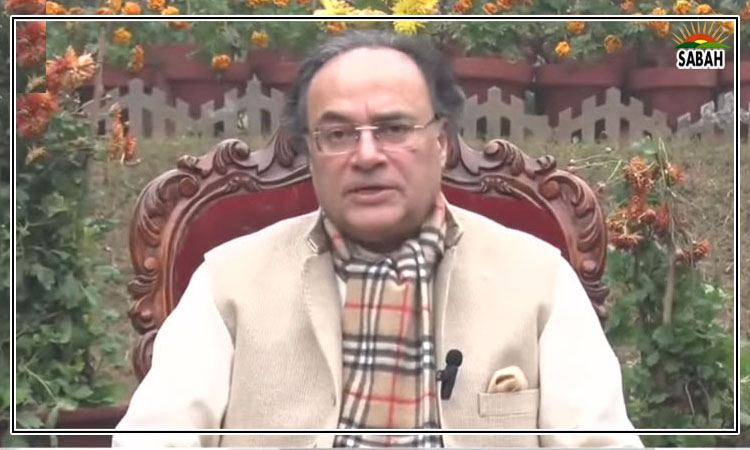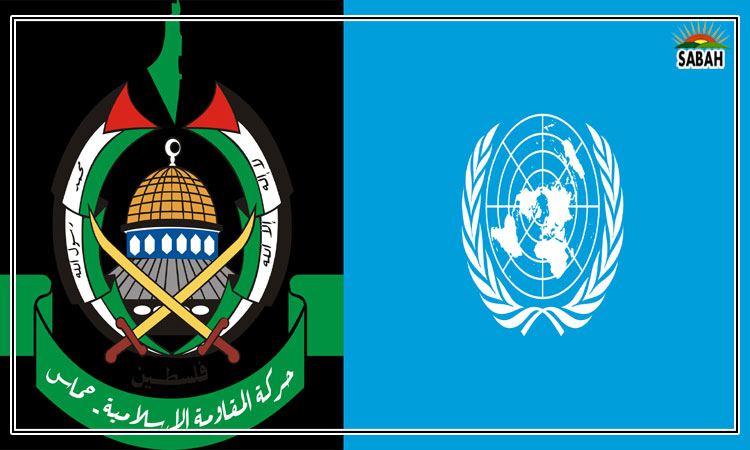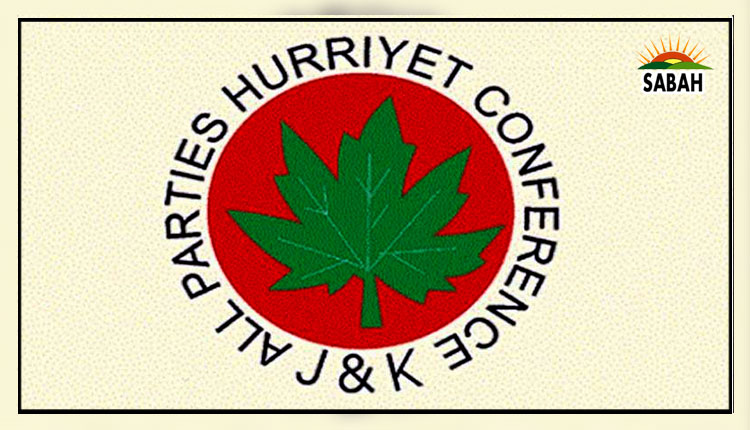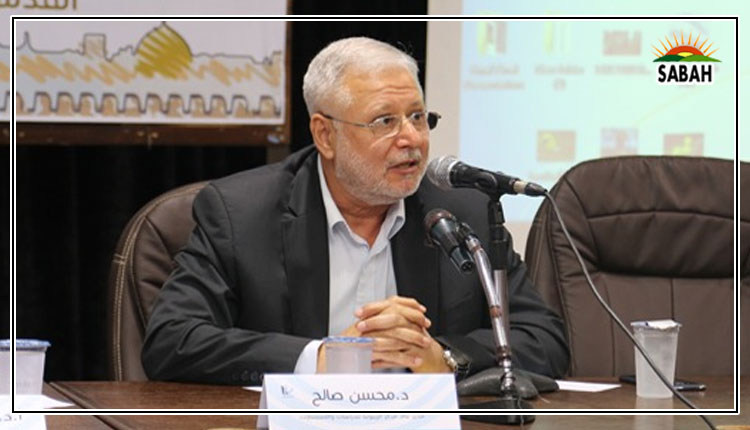Political Analysis:The Significance of Hamas’s Visit to Saudi Arabia…By: Prof. Dr. Mohsen Mohammad Saleh
The visit of Hamas delegation to Saudi Arabia opened a new page for the relation between the two sides after years of schism and negative Saudi behavior towards the Movement.
Although performed under the title of Umrah, the visit had positive implications in light of the hospitality and the welcome extended to the senior Hamas leaders, Isma‘il Haniyyah, Khalid Mish‘al, Musa Abu Marzuq, Khalil al-Hayya and Zaher Jabarin for the first time in nearly eight years (2015).
First, this visit can be understood within the framework of the Saudi repositioning, especially in the past months, based on a more professional and objective reading of regional and international developments and conditions. This is so as KSA has realized the decline in the international standing of the United States, the increasing focus of its interests on both shores of the Pacific Ocean, and its insufficient seriousness in protecting the interests and security of its allies in the Middle East. It has also been aware of the rise of China, the world’s gradual trend towards multipolarity and the desire of global powers, such as Russia and India, to consolidate their international standing and liberate themselves from the “dollar” dominance in the international economy. KSA has realized the difficulty of resolving its regional problems without understandings with the regional powers, such as Iran and Turkey. It has realized also that Saudi security and overcoming the Yemeni impasse need such understandings.
Second, several factors have perpetuated popular rejection of Israel and made it a heavy burden on any official relation. These include the failure of the peace process, the continuous Israeli and US rejection of the Saudi peace initiative (Prince/ King ‘Abdullah 2002 initiative) and Israel’s desire to normalize relations with the Arab countries without paying any price for the peace process. In addition, Israel has failed to prove itself a reliable partner in the security of the region, while adopting a more racist and aggressive agenda against Palestinians. Also, Israel’s transformation to further religious and national extremism and the formation of a government which is the most extremist in Israel’s history besides the quest to determine the fate of Jerusalem and al-Aqsa Mosque in its favor, all this makes the Saudi side more reticent towards any possible relation with Israel and more willing to open up to the active Palestinian forces.
Third, KSA might have also noticed that the boycott with Hamas, the arrest of the Movement’s cadres in the Kingdom and the attempt to dry up popular support for it did not impact the popularity of Hamas on the Palestinian, Arab and Islamic levels, and that Hamas still leads the Palestinian public opinion polls while enjoying great popular acceptance and support on the Arab and Islamic levels. Moreover, Hamas’s popularity is increasing due to its action and military resistance rather than due to its acceptance of the peace process and the like.
KSA might have also noticed that the blockade imposed on Hamas by a number of Arab countries has made the Movement more reliant on Iranian support, while still maintaining its independence. Thus, were they to be serious about confronting or reducing Iranian influence, KSA and the Arab countries must be more open to Hamas rather than being aggressive.
Therefore, it has become clear to KSA and the Arab countries that Hamas can no longer be ignored, especially since it is still a rising power which is a candidate to lead the Palestinian people and inherit the miserable and flabby situation represented by the leadership of the Palestine Liberation Organization and the Palestinian Authority.
Fourth, despite hardships, arrests and media attacks from the Saudi side, Hamas bore the harm, did not initiate any responses or counter-media attacks and tended to calm down. Such behavior contributed to easing the tension to the minimum, canceling the justifications for hostility and facilitating return to normal relations.
Fifth, activating Saudi relations with Hamas will provide a better environment for KSA to restore its important role and position in managing the Palestinian file. It would be a return to the traditional Saudi policy which has been open to the various Palestinian forces. It would also provide a better environment for popular and official support for the Palestinian people and alleviate Palestinian suffering not only in the West Bank, but also in the besieged Gaza Strip. This policy is compatible with the nature of the Saudi people, who would receive it with wide satisfaction, as Jerusalem and Palestine are at the center of their interests. This also serves the image of the Saudi leadership among its people.
Sixth, it does not appear that the Saudi openness to Hamas came primarily due to Iranian, Qatari or other pressure, and it does not appear that the issue of releasing prisoners affiliated with Hamas in KSA came or will come as a result of pressure from Houthis in Yemen. Rather, it is the result of the new state of positioning that KSA has chosen, due to its objective reading of all local, regional and international developments, which led to more openness to China and Russia, an agreement with Iran, openness to Syria and Lebanon and an attempt to facilitate a political solution in Yemen. Such a policy cannot ignore the most important and largest issue in the region, which is the Palestine issue and the major Palestinian actors on the ground.
Importantly, the “porthole” that KSA opened through this visit must be read within its limited impact, without high expectations until the conditions are ripe for its normal development. Saudi reception of Palestinian President Mahmud ‘Abbas, two days before the arrival of the Hamas delegation, could be viewed as a clear message in this respect.
Possible Scenarios:
There are three scenarios in the near and intermediate future for the KSA-Hamas relations:
First: This scenario has to do with easing tension and stopping media campaigns while maintaining a conservatively formal relation through security channels.
Second: This scenario suggests calculated openness by improving and activating relations through Saudi security frameworks, granting amnesty for the rest of Hamas detainees and adopting policies more understanding of resistance action and more critical of Israeli policies against the Palestinian people and their resistance. It also expects more concern regarding Jerusalem, the holy sites, settlements and the suffering of the Palestinians in Gaza Strip in addition to being more considerate of Hamas’s partnership in the political process.
Third: In addition to the measures in the second scenario, this scenario expects developing political relations, through direct and open communication with the Hamas leadership; turning a blind eye or allowing freedom of action for Hamas supporters within the framework of charities and supporting the steadfastness of the Palestinian people; and trying to positively mediate between Fatah, Hamas and the rest of the factions to achieve reconciliation, rebuild official Palestinian institutions and freeze normalization with Israel.
The closest scenario to realization might be the second one, which expects cautious, gradual and calculated openness commensurate with the new Saudi position, yet without antagonizing the US or causing Western pressures, which the Saudi leadership does not wish to be exposed to at this stage.
To join our English service: send “E” to http://wa.me/96181607181
▪ www.alzaytouna.net ▪












